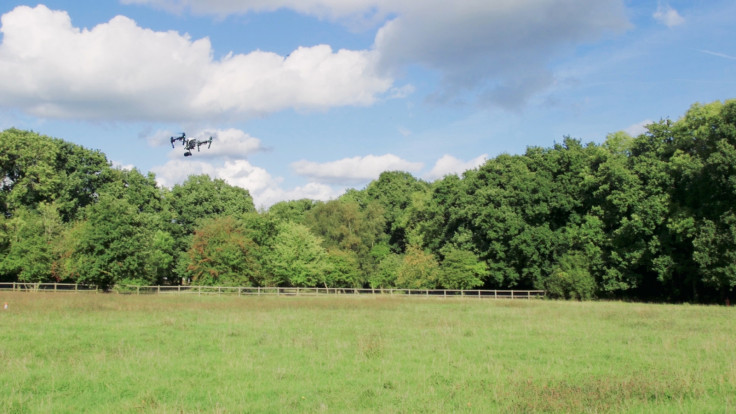Licensed to fly: What it's like training to be a professional drone pilot
IBTimes UK heads down to Hampshire to learn about what it takes to become a professional drone pilot.
It seems deceptively easy to fly a consumer drone – it's similar to a model aircraft, so all you have to do is launch it into the air and fly it around, right? Right? No.
If you haven't been living under a rock, you probably know that the UK Civil Aviation Authority (CAA) has a lot of concerns about consumers flying unmanned aerial vehicles (UAV), so if you want to fly drones for your business, you absolutely have to get certified, to prove that you know what you're doing, and most of all, that you can do it safely.
But what does this entail? IBTimes UK decided to find out by heading down to Hampshire to spend the day with UAVAir, the training arm of ConsortiQ, a firm providing range of drone solutions including professional pilot training, consultancy, and the hardware and software to analyse data from UAVs.
Learning the theory
In order to become a qualified professional drone pilot, you need to understand a fair amount of theory relating to aviation law, from understanding the different types of airspace and where you're allowed to fly, to how navigation and charting works if GPS stops working for some reason.
The course also goes through the basic principles behind different types of weather, flight and Newton's Laws of Motion, how UAVs work, as well as managing risks and identifying hazards before when pre-planning out the flight.
At the end of the two-day course, students have to pass an assessed flight planning exercise proving they have permission from landowners and informed the authorities in charge of the airspace they want to fly in, as well as passing a written examination. And on top of that, people who attend the course will already have had to complete online distance learning material and passed a series of online tests.

200 hours of recorded flight time needed
So you've made it through the theory, but you also need to prove that you're an extremely competent flyer – and that can be the hard part. In order to pass the flight assessment, potential pilots have to log at least 200 hours' flying time, some of which can be done on a computer software program.
The computer game simulates an actual drone flight using one of several different commercial models, and the user has to prove that they can fly and land safely, as well as perform specific manoeuvres in mid-air within line of sight while able to judge the depth perception exactly right – which can prove tricky.
If you've ever flown a drone before, you're probably used to flying it in GPS, where the system's satellite navigation does the hard work and keeps the UAV steady at all times, but if you want to become a licensed commercial drone pilot, then you have to prove that you can control the drone safely even in a situation where GPS isn't working properly.
For example, the reason that the CAA currently doesn't permit people to fly UAVs in highly built-up urban areas is because the satellite signal returning to the drone can sometimes end up bouncing off buildings before it gets to the UAV, so the pinpointed location of the drone is often inaccurate, meaning that the GPS system could accidently advise the drone to fly into a building.
If there's an emergency and people are on the ground near the drone, and there's bad weather and no GPS, what would you do and how can you mitigate a potential accident?
Flying a drone is not as easy as it looks
To prove the drone is in safe hands, wannabe pilots have to fly it without GPS in 'ATTI Mode'. The practical test, usually held in a big field somewhere in the countryside, involves the pilot flying the drone and then performing a series of tricky manoeuvres.

One manoeuvre requires the pilot to fly the drone up to a height of 20m and then make a full 360-degree circle around a cone on the ground, while constantly maintaining a height of 20m and an even radius around the cone of 20m as well.
The examiners also require pilots to prove that they have good height perception, and can competently fly a UAV up to a height of 40m, locate a cone on the ground and hover directly over it, as well as being able to make a smooth descending return to the takeoff and landing point in a straight line from height.
It doesn't sound easy, and take it from us, it definitely requires a lot of practice with a drone, to the extent that your eyes can't be tricked when it comes to judging just how far away the drone is from obstacles and people.
So if you're really serious about using drones for your business, you'd better get practising, as becoming a professional UAV pilot is no walk in the park.
© Copyright IBTimes 2025. All rights reserved.






















